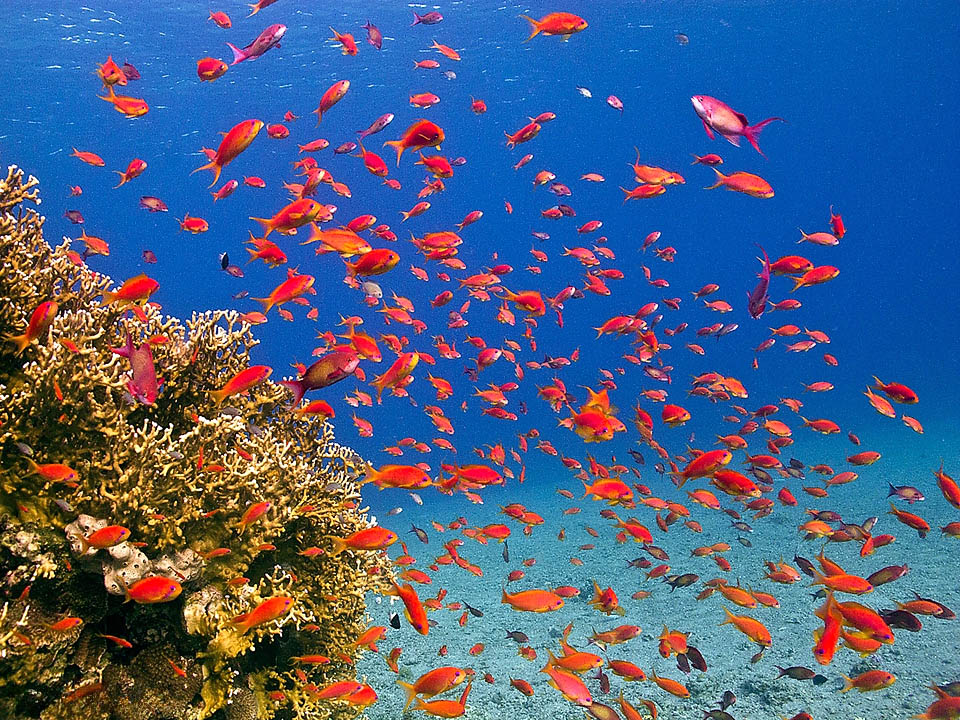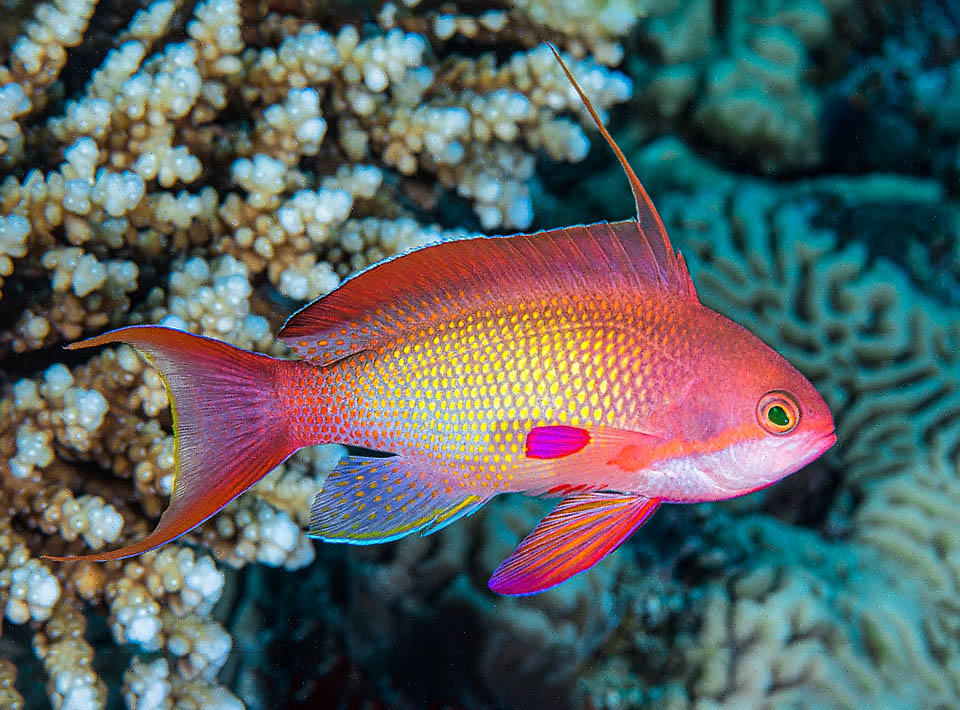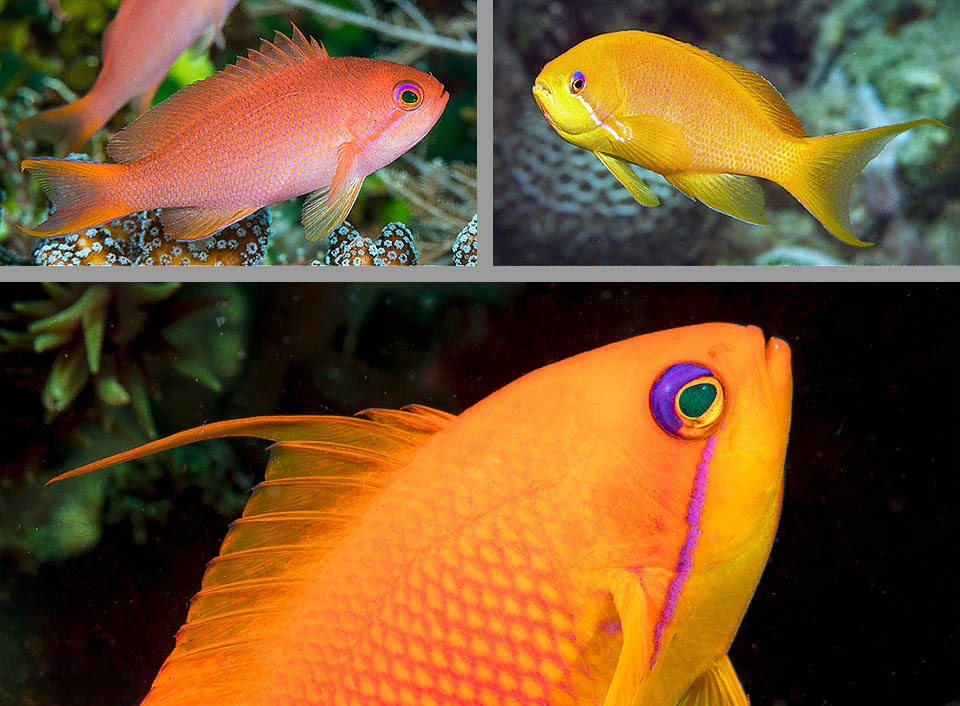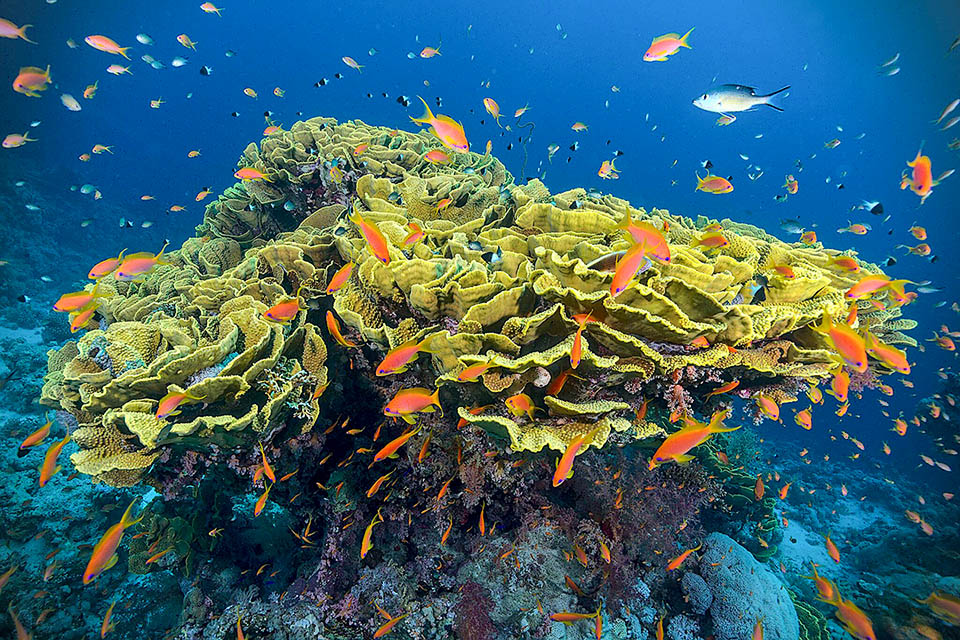Family : Serranidae

Text © Giuseppe Mazza

English translation by Mario Beltramini

Pseudanthias squamipinnis is a fish frequent, in the day close to the madreporic formations rich in plankton of west Indo Pacific © Rafi Amar
Close relative to our Anthias anthias, one of the most colourful fish present in the Mediterranean, in the Black Sea and in the eastern Atlantic, Pseudanthias squamipinnis Peters, 1855, is its tropical counterpart of the Indian Ocean and of the western Pacific.
It belongs to the class of the Actinopterygii, the ray-finned fish, to the order of the Perciformes, and is inserted traditionally in the family of the Serranidae, even if nowadays, to highlight its differences, is at times placed in the suborder of the Serranoidei family Anthiadidae.
The genus Pseudanthias created by Bleeker in 1871 originates from the Greek “pseudo”, fake, and by
Anthias a mythical lucky fish for the fishermen of which reported Aristotle. That is, it is about a fish resembling as we have also seen in the present taxonomy, those of the genus Anthias. The specific term squamipinnis reminds us, conversely, in Latin, that its showy scales cover the lower part of the fins.
Zoogeography

The alpha males, twice as big as females, have yellowish sides, a purple spot on the pectoral fin and the third ray of the dorsal much longer © François Libert
Pseudanthias squamipinnis has a very wide range. We find it from the Red Sea to South Africa, then in INdia, Thailand, Indonesia, Papua New Guinea and Australia. Northwards, it reaches Japan, southwards Lord Howe, and eastwards, French Polynesia with the Fiji Islands, Tonga and Niue.
Ecology-Habitat
It is a tropical gregarious fish very common in 22-28 °C waters swimming during the day around the madreporic formations, exposed to currents rich in plankton, from the surface up to about 35 m of depth, exceptionally going down up to 55 m.
Morphophysiology
The oval body, relatively tall and compressed, can reach 15 cm in the alpha males. Almost twice as large as their companions, they control a small territory with a harem of 5-10 females, often competing for hierarchy in the group.

In females, who growing can turn into males, the colour is more uniform, bright yellow-orange, and the most characteristic trait is the violet superciliary arch © aspearton
Pseudanthias squamipinnis is in fact a protogynous hermaphroditic species, and these, while growing, transform into males. When the ruler dies the biggest changes rapidly its sex within 2-4 weeks and takes command of the group changing livery.
Both sexes have a red-orange line that, starting from the mouth, reaches the base of the pectoral fin, but in the females it is flanked by a line tending towards purple. Moreover, these present a uniform bright yellow-orange colouration and their superciliary arch is decidedly violet. Conversely, males dominate the carmine red with yellowish sides, and are easily recognized by their showy purple spot on the pectorals. Furthermore, the third rays of the dorsal fin, that has 10 spiny rays and 15-17 unarmed, is much longer than that of its companions.
The anal fin of Pseudanthias squamipinnis counts 3 spiny rays and 6-7 unarmed; the petcoral ones 16-18; the pelvic are well developed and the falcate tail fin has a serrated edge. Numerous, besides the sexual dimorphism, are however the variations in colour and some biologists hypothesize the presence of 4 different species, but like for Hypoplectrus puella we shall have to wait for the results of the ongoing molecular research.

Pseudanthias squamipinnis fees mainly on zooplankton, but also on small worms, crustaceans and fry. Reproduction occurs by dusk, between November and June © Luis Pérez Berrocal
Ethology-Reproductive Biology
Pseudanthias squamipinnis feed mainly on zooplankton, but also on small worms, crustaceans and fry.
Reproduction takes place at dusk, between November and June. At about evening the alpha male opens the dance to which the females and the males without territory participate and who usually live close to the seabed in order not to get in conflict with the ruler of the zone. The eggs, fecundated in free waters, are planktonic.
The resilience of the species is high with a minimum time for doubling of the populations less than 15 months and the fishing vulnerability, low, marks 23 on a scale of 100. Since 2015, Pseudanthias squamipinnis has appeared as “LC, Least Concern” in the IUCN Red List of the endangered species.
Synonyms
Serranus squamipinnis Peters, 1855; Franzia squamipinnis (Peters, 1855).
→ For general information about FISH please click here.
→ For general information about BONY FISH please click here
→ For general information about CARTILAGINOUS FISH please click here.
→ To appreciate the BIODIVERSITY of BONY FISH please click here.
→ To appreciate the BIODIVERSITY of CARTILAGINOUS FISH please click here.
